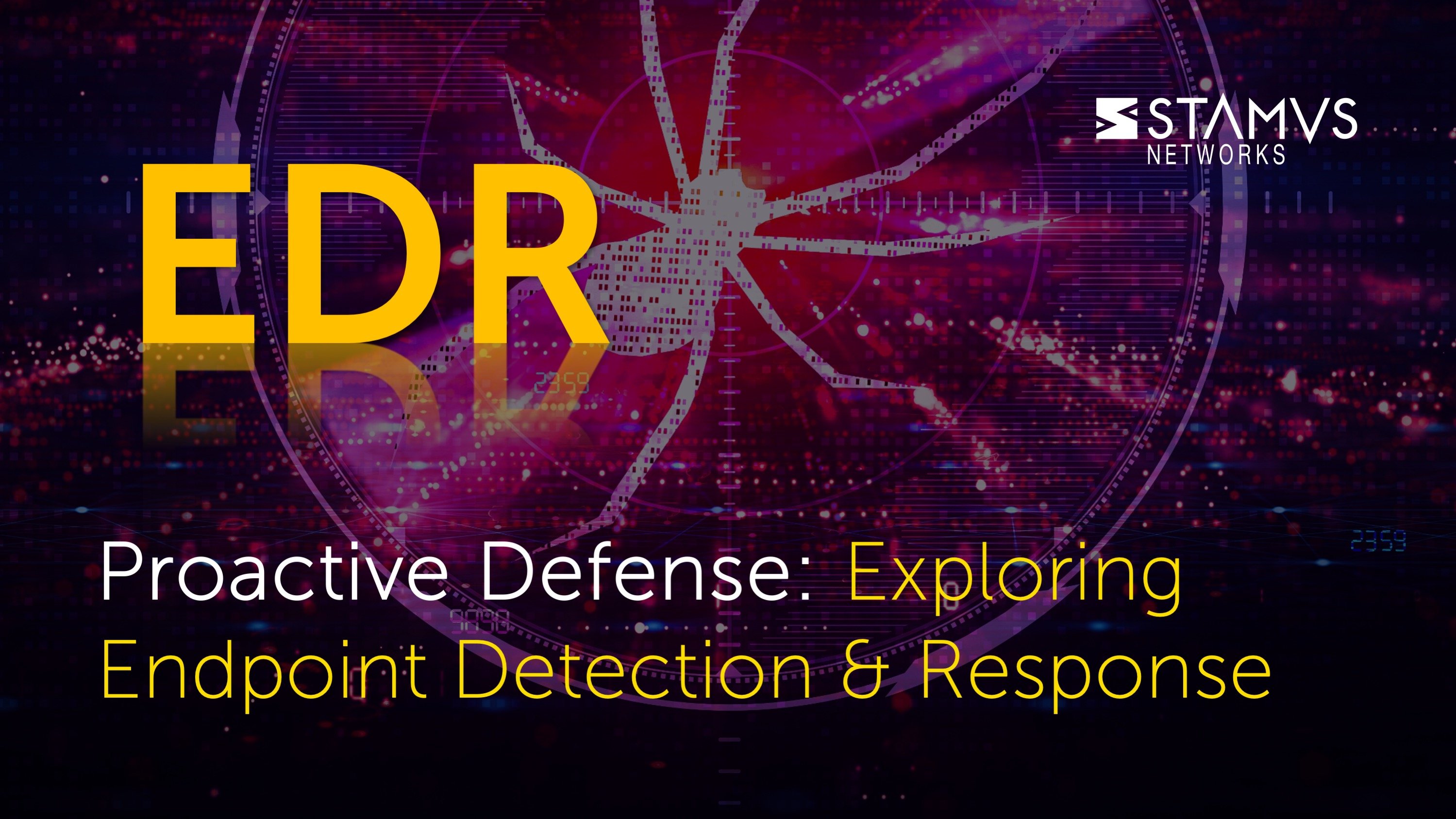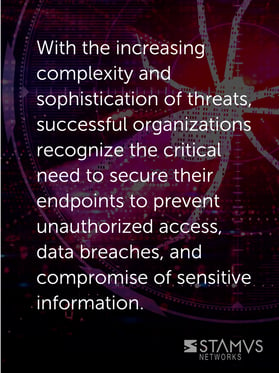 Endpoint security is one of the most common cybersecurity practices used by organizations today. This is because endpoints, such as laptops, desktops, servers, and mobile devices, are common entry points and targets for potential cyber attacks. With the increasing complexity and sophistication of threats, successful organizations recognize the critical need to secure their endpoints to prevent unauthorized access, data breaches, and compromise of sensitive information. By adopting robust endpoint security measures, organizations can mitigate risks, proactively detect and respond to threats, and safeguard their digital assets and infrastructure from evolving cyber threats.
Endpoint security is one of the most common cybersecurity practices used by organizations today. This is because endpoints, such as laptops, desktops, servers, and mobile devices, are common entry points and targets for potential cyber attacks. With the increasing complexity and sophistication of threats, successful organizations recognize the critical need to secure their endpoints to prevent unauthorized access, data breaches, and compromise of sensitive information. By adopting robust endpoint security measures, organizations can mitigate risks, proactively detect and respond to threats, and safeguard their digital assets and infrastructure from evolving cyber threats.
An increasingly popular modern endpoint security measure is Endpoint Detection and Response (EDR). This blog post, which is the third in our five part series on threat detection and response systems, focuses on EDR. We discuss endpoint visibility, the benefits, use cases, and possible limitations of EDR systems, and how EDR can complement other systems to provide a more comprehensive approach to cyber defense.
Understanding Endpoint Detection and Response (EDR) and Its Differentiation from Network Detection and Response (NDR)
Endpoint Detection and Response (EDR) is a cybersecurity solution designed to protect and secure individual endpoints against advanced threats. EDR systems provide real-time monitoring, threat detection, and incident response capabilities at the endpoint level. By continuously collecting and analyzing endpoint telemetry data, EDR solutions can identify malicious activities, indicators of compromise (IOCs), and potential security incidents.
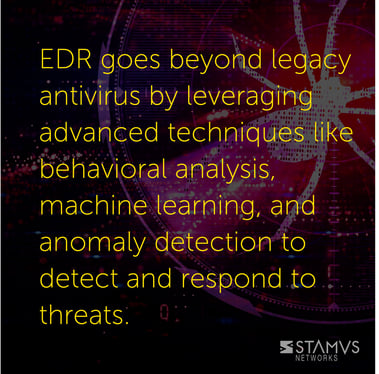 EDR solutions go beyond legacy antivirus software by leveraging advanced techniques like behavioral analysis, machine learning, and anomaly detection to detect and respond to threats. These solutions monitor various endpoint activities – like file executions, registry modifications, network connections, and user behaviors – to identify signs of malicious behavior or suspicious activities. EDR solutions can detect both known and unknown threats, including malware infections, advanced persistent threats (APTs), and insider threats.
EDR solutions go beyond legacy antivirus software by leveraging advanced techniques like behavioral analysis, machine learning, and anomaly detection to detect and respond to threats. These solutions monitor various endpoint activities – like file executions, registry modifications, network connections, and user behaviors – to identify signs of malicious behavior or suspicious activities. EDR solutions can detect both known and unknown threats, including malware infections, advanced persistent threats (APTs), and insider threats.
EDR systems differ from Network Detection and Response (NDR) in both focus and scope. EDR monitors and secures individual endpoints by analyzing telemetry data and detecting threats at the endpoint level. NDR however, monitors and analyzes network traffic to identify potential threats, anomalies, and indicators of compromise (IOCs) within the organization's entire infrastructure. These are both effective threat detection systems in their own right, and when paired together they can create a comprehensive network security strategy.
Endpoint Detection and Response Use Cases
EDR systems offer a range of use-cases which enable organizations to effectively detect, respond to, and mitigate threats at an endpoint level. There are four key applications of EDR:
- 1. Automated Threat Detection: EDR agents are installed on individual devices to identify potential threats from an endpoint level. This allows them to detect malware infections, APTs, insider threats, and more.
- 2. Incident Investigation and Forensics: By providing visibility into endpoint events, processes, and network connections, EDR allows security teams to reconstruct the timeline of an endpoint-related incident, identify the root cause, and understand the attack methodology. EDR logs and data can be used as evidence during forensic investigations and can aid in determining the extent of a security breach.
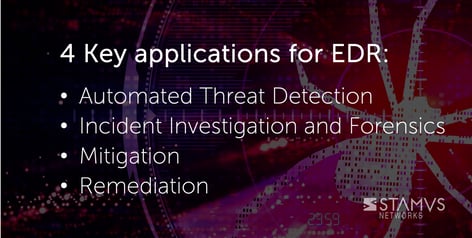
- 3. Mitigation: By monitoring endpoint processes, file modifications, network connections, and user behavior, EDR tools can identify suspicious or abnormal activities indicative of potential threats. Behavioral analysis capabilities help detect anomalies and deviations from normal patterns, enabling proactive threat detection and reducing false positives.
- 4. Remediation: EDR systems can help organizations take immediate remedial action to prevent further damage or attacks. Once a threat is identified, whether by EDR or another integrated system, EDR can automatically trigger a response action to block suspicious IP addresses, isolate compromised end-user devices, or implement access control policies. These actions can help contain the threat, prevent lateral movement, and minimize the impact of a security incident.
The Importance of Endpoint Visibility for Detecting and Responding to Targeted Threats
Endpoint visibility can play a crucial role in detecting and responding to specific threats within an organization. Endpoints are the entry points and targets for many cyber attacks. By having comprehensive visibility into endpoint activities, organizations can effectively identify and mitigate threats that specifically target individual devices or exploit vulnerabilities at the endpoint level.
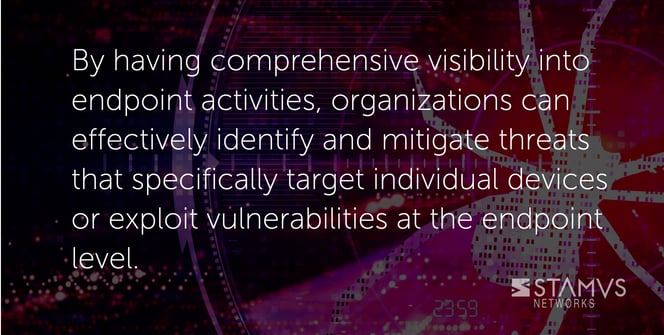 Endpoint visibility allows security teams to monitor and analyze various endpoint behaviors, including file activity, process execution, network connections, and user behavior. This granular level of visibility can enable the detection of suspicious or malicious activities, such as unauthorized access attempts, malware infections, data exfiltration, and lateral movement within the network. By identifying these specific threats at the endpoint level, organizations can swiftly respond and implement appropriate security measures to prevent further compromise and minimize the potential impact on the network.
Endpoint visibility allows security teams to monitor and analyze various endpoint behaviors, including file activity, process execution, network connections, and user behavior. This granular level of visibility can enable the detection of suspicious or malicious activities, such as unauthorized access attempts, malware infections, data exfiltration, and lateral movement within the network. By identifying these specific threats at the endpoint level, organizations can swiftly respond and implement appropriate security measures to prevent further compromise and minimize the potential impact on the network.
Additionally, endpoint visibility provides valuable insights for incident response and forensic analysis. In the event of a security incident, detailed endpoint logs and telemetry data can be used to reconstruct the attack timeline, determine the extent of the breach, and gather evidence for further investigation. Endpoint visibility can allow security teams to understand the tactics, techniques, and procedures (TTPs) employed by attackers, aiding in the development of effective countermeasures and the improvement of overall security defenses.
Additional Benefits of Endpoint Detection and Response (EDR)
- Advanced Threat Detection: EDR solutions employ sophisticated techniques to detect and identify advanced and evasive threats that may bypass traditional security measures.
- Real-time Incident Response: EDR provides real-time visibility into endpoint activities, enabling quick response and containment of security incidents.
- Endpoint Visibility: EDR solutions offer deep visibility into endpoint behaviors, processes, and network connections, providing valuable insights for security analysis and forensic investigations.
- Rapid Threat Remediation: EDR tools help security teams swiftly mitigate and remediate threats, minimizing the impact and reducing the time to recovery.
- Behavioral Analysis: EDR solutions use behavioral analytics to identify abnormal activities, anomalies, and indicators of compromise, allowing proactive threat detection.
- Forensic Analysis: EDR facilitates in-depth forensic analysis of security incidents, aiding in the understanding of attack methodologies, identifying the root cause, and gathering evidence.
- Compliance and Reporting: EDR tools offer robust logging and reporting capabilities, helping organizations meet regulatory compliance requirements and demonstrate adherence to security standards.
- Threat Intelligence Integration: By integrating with threat intelligence feeds, EDR solutions can help organizations stay informed and protected from emerging threats.
- Centralized Management: Some organizations might have thousands of endpoints with installed agents. EDR systems provide a unified console for managing those agents, making monitoring simpler.
- Rollback Capabilities: Many EDR solutions allow organizations to restore devices back to a pre-infected state, saving valuable data that might be stored in that endpoint.
- Threat Hunting: By providing insights into endpoint activities and behaviors, EDR systems enable security teams to engage in proactive threat hunting where they might uncover specific threats that have not triggered alerts.
Limitations of Endpoint Detection and Response
EDR is a highly capable system, but it does come with some limitations. This is why most experts recommend that organizations develop a comprehensive cybersecurity strategy that includes multiple different types of systems. Some of the potential challenges of EDR include:
- 1. Endpoint Coverage and Scalability: Most EDR solutions require agents to be installed on individual endpoints to collect and analyze data. Managing and scaling these agents across a large number of endpoints can be challenging, especially in dynamic and diverse environments. Ensuring comprehensive coverage and scalability while minimizing performance impact and resource consumption is a key challenge for EDR implementations.
- 2. Endpoint Agent Compatibility: In some situations – such as an organization that supports a bring-your-own-device (BYOD) model, an Internet of Things (IoT) environment, military, medical, automotive, or industrial control systems – it is impossible to install endpoint agents. Many of these environments do not have typical endpoints that are even capable of installing agents. In these situations, the organization must look towards other threat detection and response systems, such as NDR, to provide coverage
- 3. False Positives and Alert Fatigue: EDR systems generate alerts based on suspicious or anomalous activities detected on endpoints. However, these alerts may sometimes result in false positives, indicating threats that turn out to be benign. Dealing with a high volume of false positives can lead to alert fatigue, where security teams may become overwhelmed and potentially miss genuine threats amidst the noise.
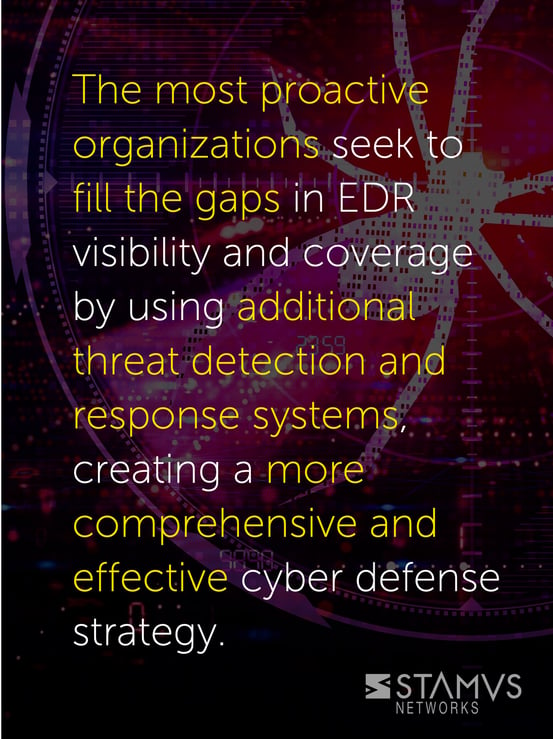
- 4. Endpoint Performance and User Impact: EDR solutions continuously monitor and analyze endpoint activities, which can impact system performance, especially on resource-constrained devices. Heavy resource usage by EDR agents may lead to latency or compatibility issues. Finding a balance between security monitoring and minimizing disruption to end-user experience is a challenge for effective EDR deployment.
- 5. Privacy and Data Protection: EDR systems collect and analyze data from endpoints, which can raise concerns related to privacy and data protection. Organizations need to ensure that proper data governance and privacy policies are in place to handle sensitive information. Balancing the need for visibility and security with privacy requirements and regulatory compliance is a challenge that organizations must address when implementing EDR.
- 6. Skill and Resource Requirements: EDR systems generate vast amounts of endpoint data that require skilled security personnel to analyze and respond effectively. Organizations need trained professionals with the expertise to interpret EDR alerts, investigate incidents, and perform forensic analysis. The shortage of skilled cybersecurity professionals and the cost associated with building and maintaining a capable security team can pose challenges to maximizing the value of EDR systems.
Addressing these challenges requires careful planning, adequate resource allocation, and ongoing optimization of EDR deployments. Organizations should consider these limitations while implementing EDR solutions and develop strategies to overcome them for successful threat detection and response capabilities. The most proactive organizations seek to fill the gaps in EDR visibility and coverage by using additional threat detection and response systems, creating a more comprehensive and effective cyber defense strategy.
The Power of Integrating EDR and NDR Systems
Organizations that wish to create the most comprehensive security strategy possible integrate several systems together. By including both an EDR and NDR system into your organization’s security architecture, you can achieve a very holistic view of your environment and minimize blindspots and vulnerabilities. 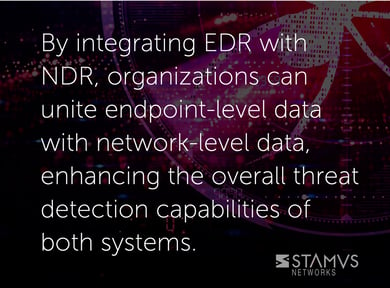
By integrating EDR with NDR, organizations can unite endpoint-level data with network-level data, enhancing the overall threat detection capabilities of both systems. Integration allows for the correlation and analysis of data from both endpoints and the network, providing deeper insights into the full attack lifecycle. By combining endpoint telemetry with network traffic analysis, organizations can detect advanced threats that span across multiple devices and network segments. Additionally, the contextual information provided by both EDR and NDR enhances incident response capabilities, enabling faster and more accurate response to security incidents.
Harnessing the Power of Endpoint Detection and Response
In conclusion, EDR can be an effective solution for monitoring and responding to endpoint-level threats, and when paired with complementary systems — like NDR — it can minimize blindspots and vulnerabilities within an organization.
In our next post we will take a look at extended detection and response (XDR), so make sure to subscribe to the Stamus Networks blog, follow us on Twitter and LinkedIn, or join our Discord to be notified of new posts.

